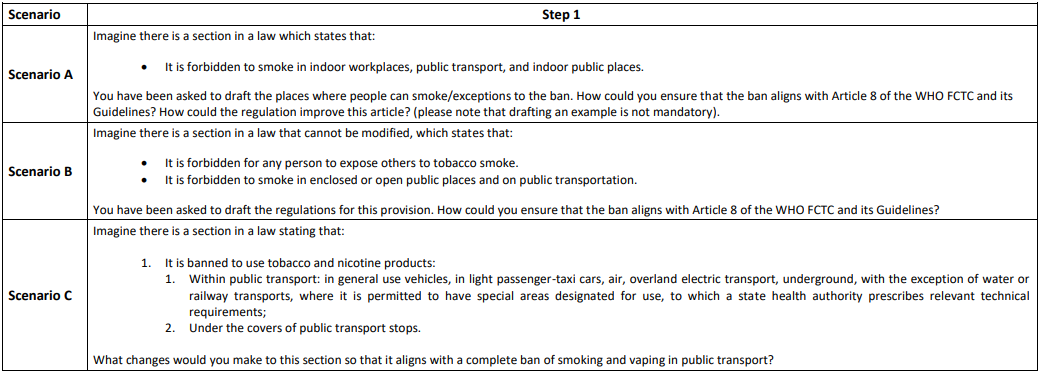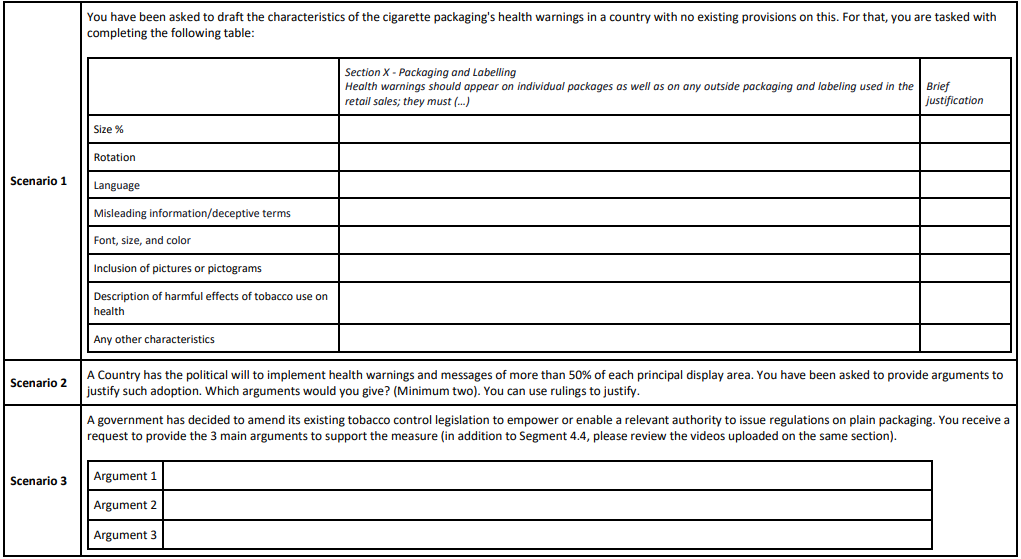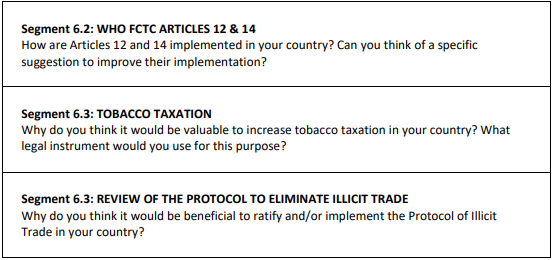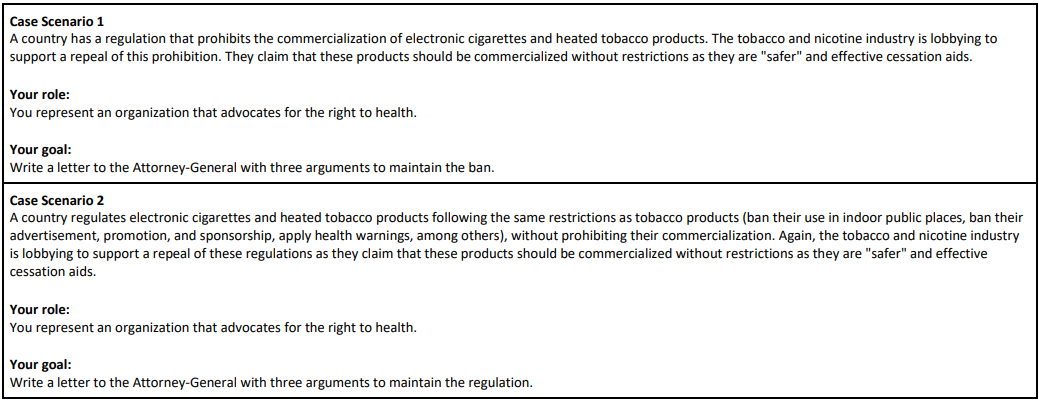-
GeneralGeneral
-
Tobacco Control Legislation (with examples from the Caribbean) Homepage


Tobacco use is a common risk factor for six of the eight leading causes of death, which account for almost two-thirds of the total worldwide deaths. Furthermore, it is a common risk factor for the four main non-communicable diseases (NCDs): cardiovascular, chronic respiratory, cancer, and diabetes. Globally, these diseases account for 70% of the total deaths per year, of which 38% occur prematurely. The World Health Organization’s Framework Convention on Tobacco Control (WHO FCTC) describes the scientifically-based strategies and measures to combat this, but the implementation of effective tobacco control measures requires committed work across sectors to realize appropriate implementation of these strategies that will lead to significant improvements in morbidity and mortality from tobacco use.
This course is sponsored by the Pan American Health Organisation (PAHO) in collaboration with the Caribbean Court of Justice Academy for Law and was developed to enhance capacity for the development and implementation of effective, WHO FCTC-compliant tobacco control legislation in the Caribbean. This course was originally delivered on PAHO’s Virtual Campus for Public Health (VCPH) platform for a chosen cohort of Government officials from the English-speaking Caribbean who are actively involved in the process of developing and implementing legislation, notably tobacco control legislation. The course is an important resource for the Caribbean and maybe contextualized for other world regions.
PAHO and CAFL members developed and reviewed the technical contents of this course with the participation of Elisa Prieto, Advisor, Non Communicable diseases, Subregional Program Coordination; Eduardo Bianco, Technical Director of the International Center for Tobacco Control Cooperation; Kavita Singh, Regional Data Coordinator, Tobacco Control; Irene Melamed, Consultant, and Coordinator, Virtual Campus of Public Health; Kimberley Benjamin, Part-time Consultant, Caribbean Court of Justice Academy for Law; and Luciana Severini, International Consultant, Department Noncommunicable Diseases and Mental Health, Risk Factors and Nutrition Unit, WHO Regional Office for the Americas. NextGenU.org’s staff adapted the technical content and collaborated in developing assessments and other didactic materials.NextGenU.org members participating in the creation of this course include Margaret Niles, PhD, MEd, DipID; Hugo Rojas, MD, MSc, DiplEd; Stephanie Sankar, LLB, L.E.C.; Pablo Baldiviezo, MD, DiplEd.
The course is largely based on the Pan American Health Organization’s “Manual for developing Tobacco Control Legislation in the Caribbean” and draws on international case studies, as well as Caribbean experiences and legislative contexts. It uses learning resources from accredited, world-class organizations such as the Pan American Health Organization and the World Health Organization. It includes 8 interactive modules that combine self-directed, peer-to-peer, and tutoring-based approaches, as well as didactic, experiential, and practice-based methodologies. Learning activities on the various topics of study include webinars, assignments, and quizzes.
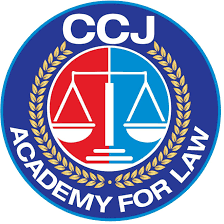
There are 8 modules to complete, which include:
- Module 1: The tobacco epidemic and status of tobacco control
- Module 2: Developing tobacco control legislation
- Module 3: Protection from exposure to tobacco smoke
- Module 4: Packaging and labeling of tobacco products
- Module 5: Tobacco advertising, promotion, and sponsorship
- Module 6: Other measures
- Module 7: Novel and emerging nicotine and tobacco products
- Module 8: Protecting tobacco control policies from the commercial and other vested interests of the tobacco industry
The completion time for this course is estimated at 50 hours, comprising 14 hours of learning resources that include webinars of live course version, 14 hours for time to study content and assimilation, and 22 hours of participating in learning activities and quizzes, to assist the learners in the synthesis of learning materials. This course is equivalent to 1 credit hour.
Requirements for completion of course:
The course requires the completion of all activities (i.e. discussion forums and quizzes.) At the end of each module, there is a practice quiz of ten (10) multiple-choice questions and a discussion forum. After you’ve completed each module, quiz, and discussion forum, you’ll have access to a final exam consisting of forty (40) multiple-choice questions, a final discussion forum, and a chance to evaluate this course. The required score of 70% or higher is needed to successfully complete the course. Once you’ve successfully completed the course, you will be able to download a certificate of completion from NextGenU.org and endorsed by PAHO and CAFL. We keep all of your personal information confidential, never sell any of your information, and only use anonymized data for research purposes. Also, we are happy to report your testing information and share your work with anyone (your school, employer, etc.) at your request.
Engaging with this course:
You may browse this course for free to learn for your personal enrichment; there are no requirements.
To obtain a certificate, a learner must successfully complete:
● All reading requirements,
● All quizzes and pass with a 70% with unlimited attempts,
● All discussion forums,
● The final quiz with a minimum of 70%,
● The self and course evaluation forms.To obtain credit:
- Complete all requirements listed above for the certificate, and
- Your learning institution or workplace should approve the course for educational credit, as they would for their learner taking a course anywhere.
To obtain a degree, NextGenU.org co-sponsors degree programs with institutional partners. To obtain a full degree co-sponsored with NextGenU.org, registrants must be enrolled in a degree program as a student of a NextGenU.org institutional partner. If you think that your institution might be interested in offering a degree with NextGenU.org contact us.
We hope that you will find this a rewarding learning experience, and we count on your assessment and feedback to help us improve this training for future students.
Here are the next steps to take the course and earn a certificate.
- Complete the registration form
- Take the pre-test
- Begin the course with Module 1: The tobacco epidemic and status of tobacco control. In each lesson, read the description, complete all required readings and any required activity, as well as take the corresponding quizzes and discussion forums.
This course meets nationally approved standards of education developed for the addiction/substance use disorders counseling profession. This course's participants are assured that the continuing education (CE) credits provided will be accepted toward national credentialing by the NAADAC Certification Commission for Addiction Professionals (NCC AP), as well as by many of the individual state licensing/certification bodies in the addiction and other helping professions.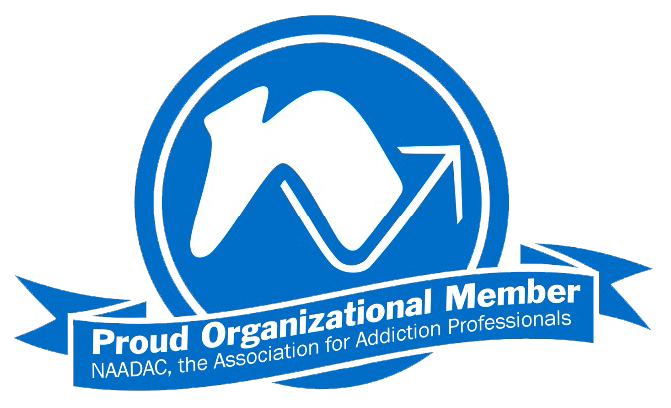
We hope that you will find this a rewarding learning experience, and we count on your assessment and feedback to help us improve this training for future students.
Disclaimer: This course is Caribbean-focused and requires contextualization for other regions. The course has been produced with the help of a grant managed by the International Union Against Tuberculosis and Lung Disease (The Union) and funded by Bloomberg Philanthropies. The content of this course is the sole responsibility of the authors and can under no circumstances be regarded as reflecting the position of The Union or the Bloomberg Philanthropies.
Subscribe to our newsletter to be notified of future updates, new courses, and to be part of our community.
-
Module 1: The Tobacco Epidemic and Status of Tobacco Control
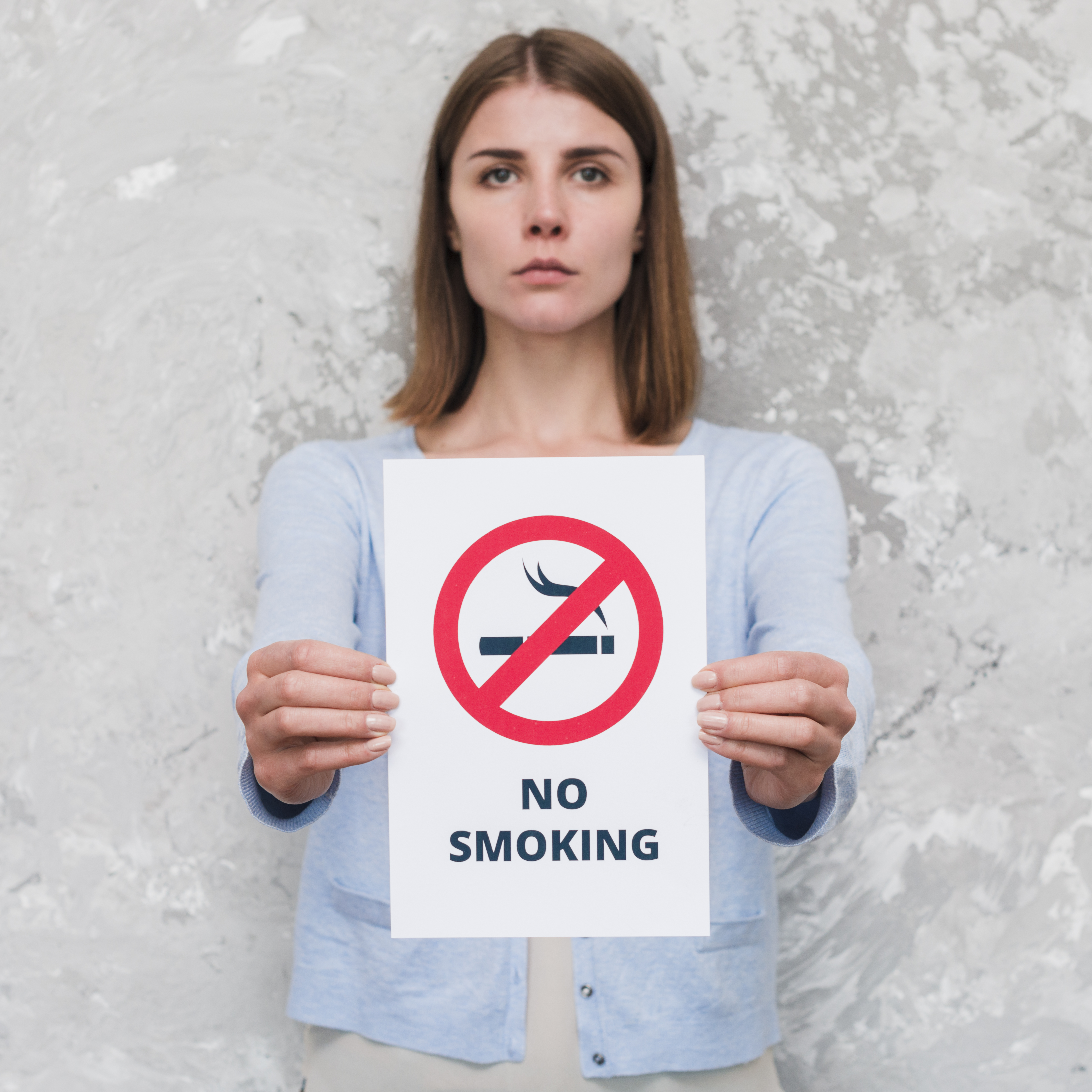 By the end of this module and upon completion of the required readings and activities, participants will be able to:
By the end of this module and upon completion of the required readings and activities, participants will be able to:- Discuss the health, economic, social, and environmental impacts of the tobacco epidemic;
- Assess the importance of and difficulties surrounding tobacco control in light of key emerging challenges;
- Identify the international, regional, and Caribbean legal frameworks, mandates, and accountability mechanisms; and
- Describe the monitoring and status of implementation of tobacco control measures in the Caribbean.
9 URLs, 1 File, 1 Forum - Discuss the health, economic, social, and environmental impacts of the tobacco epidemic;
-
Module 2: Developing Tobacco Control Legislation

By the end of this module and upon completion of the required readings and activities, participants will be able to:
- Assess the vital role of law in addressing NCDs and advancing the tobacco control agenda;
- Identify possible routes for effective WHO FCTC implementation;
- Assess the considerations that come into play when choosing between the possible routes for effective WHO FCTC implementation and the content of measures;
- Describe the key components that should be included in effective tobacco control legislation;
- Assess the intersection of trade and tobacco control; and
- Outline the typical policy and legislative processes involved in developing tobacco control legislation in the Caribbean.
15 URLs, 1 Forum, 1 Quiz -
Module 3: Protection From Exposure to Tobacco Smoke

By the end of this module and upon completion of the required readings and activities, participants will be able to:
- Discuss the rationale and summarize the evidence regarding exposure to second-hand smoke and smoke-free measures;
- Describe the status of implementation of Article 8 of the WHO FCTC in the Caribbean;
- Identify the key elements of smoke-free measures necessary to effectively protect people from exposure to tobacco smoke;
- Assess the common arguments of the tobacco industry and provide effective counter-arguments;
- Analyze the key legal arguments used to try to challenge comprehensive smoke-free measures; and
- Design and draft effective smoke-free measures.
11 URLs, 1 File, 1 Forum, 1 Quiz -
Module 4: Packaging and Labelling of Tobacco Product

By the end of this module and upon completion of the required readings, participants will be able to:
- Discuss the rationale and evidence for the implementation of effective tobacco packaging and labelling measures;
- Describe the status of implementation of tobacco control measures in the Caribbean;
- Identify and analyse the key elements of effective tobacco packaging and labelling measures;
- Assess the common arguments of the tobacco industry and its allies against effective packaging and labelling measures and provide robust counter-arguments;
- Analyse the key legal arguments from prominent cases on packaging and labelling of tobacco products;
- Discuss the additional benefits of plain packaging; and
- Design and draft effective tobacco packaging and labelling measures.
Click here to start this module12 URLs, 1 Forum, 1 Quiz -
Module 5: Tobacco Advertising, Promotion and Sponsorship
 By the end of this module and upon completion of the required readings, participants will be able to:
By the end of this module and upon completion of the required readings, participants will be able to:- Discuss the rationale and evidence for the implementation of effective tobacco advertising, promotion and sponsorship measures;
- Describe the monitoring and status of implementation of tobacco advertising, promotion and sponsorship measures in the Caribbean;
- Identify and analyze the key elements of effective tobacco advertising, promotion and sponsorship measures;
- Assess the common arguments of the tobacco industry and its allies against effective tobacco advertising, promotion and sponsorship measures and provide robust counter-arguments;
- Analyze the key legal arguments from prominent cases on tobacco advertising, promotion, and sponsorship measures; and
- Design and draft effective tobacco advertising, promotion, and sponsorship measures.
11 URLs, 1 Forum, 1 Quiz -
Module 6: Other measures

By the end of this module and upon completion of the required readings, participants will be able to:
- Discuss the importance of regulating the contents of tobacco products and the reporting of constituents and emissions;
- Discuss the importance of education, communication, training, and public awareness; and
- Identify the key components of the Protocol to Eliminate Illicit Trade in Tobacco Products.
10 URLs, 1 Forum, 1 Quiz -
Module 7: Novel and emerging nicotine and tobacco products
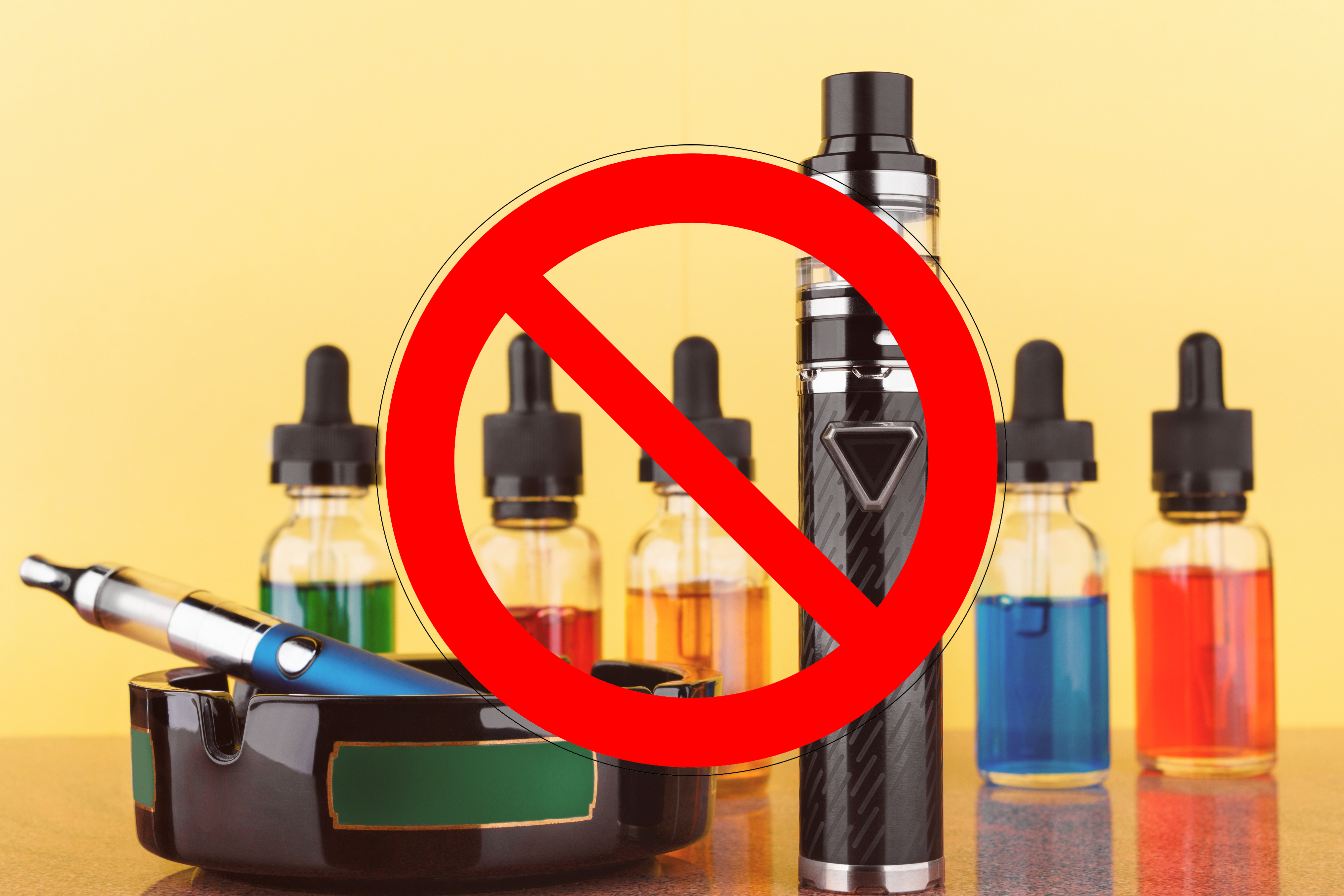
By the end of this module and upon completion of the required readings, participants will be able to:
- Discuss the rationale and the evidence for regulating novel and emerging nicotine and tobacco products (HTPs, ENDS, and ENNDS); and
- Identify the key policy options to address novel and emerging nicotine and tobacco products (HTPs, ENDS, and ENNDS).
Click here to start this module7 URLs, 1 File, 1 Forum, 1 Quiz -
Module 8: Protecting tobacco control policies from the commercial and other vested interests of the tobacco industry
 By the end of this module and upon
completion of the required readings, participants will be able to:
By the end of this module and upon
completion of the required readings, participants will be able to:- Discuss the rationale and summarize the evidence for protecting tobacco control policies from the commercial and other vested interests of the tobacco industry;
- Describe the current status of implementation of Article 5.3 of the WHO FCTC in the Caribbean;
- Identify the key elements which need to be tailored for implementation of WHO FCTC Article 5.3; and
- Design and draft effective measures to protect tobacco control policies from the commercial and other vested interests of the tobacco industry.
6 URLs, 1 Forum, 1 Quiz -
Final Assignment
To complete this assignment, you are required to reflect on the progress your country has made in implementing tobacco control measures. If your country has started to implement control measures, you must select Track 1. However, if your country has not implemented tobacco control measures, you must select Track 2.
2 Forums -
Course and Self Evaluation & Certificate
 In this section, you can provide feedback about this course to help us make NextGenU.org better. Once evaluations are completed, you will be able to download your certificate of completion.
In this section, you can provide feedback about this course to help us make NextGenU.org better. Once evaluations are completed, you will be able to download your certificate of completion.
Tobacco Control Legislation (with examples from the Caribbean)
Register for this course to access the discussion forums

